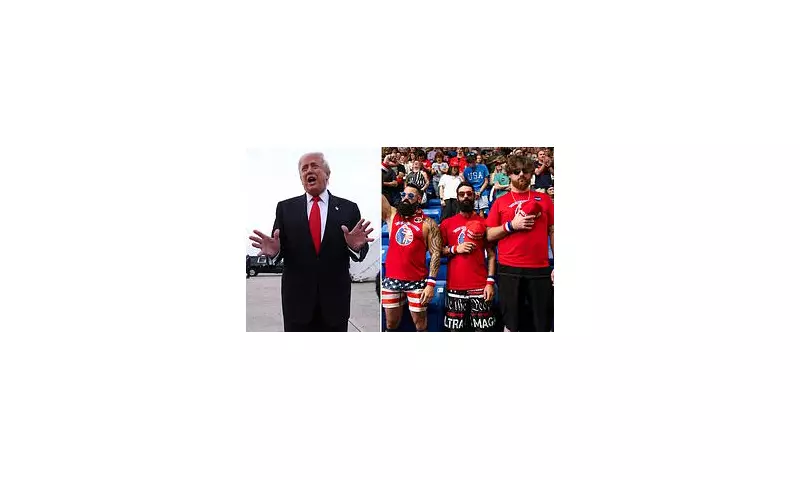
A significant political shift has emerged in American politics as young male voters, once a cornerstone of Donald Trump's 2024 coalition, have dramatically turned away from Republican candidates in recent state elections.
The Disappearing MAGA Vote
During this month's elections in Virginia, New Jersey and New York City, polling stations witnessed a notable absence: the young men in red MAGA hats who had been so visible during President Trump's successful 2024 campaign. These voters, aged between 18 and 29, had been instrumental in propelling Trump to the White House just a year earlier, when he secured 49 percent of their votes compared to Kamala Harris's 48 percent.
However, the recent electoral contests tell a different story. In Virginia's governor race, Democrat Abigail Spanberger achieved a remarkable 17-point advantage among young male voters. Across the border in New Jersey, Democrat Mikie Sherrill secured a 14-point lead with the same demographic.
The most dramatic reversal occurred in New York, where Zohran Mamdani captured 67 percent of men under 30, leaving his Republican opponent Andrew Cuomo with just 26 percent. Only five percent of young male voters supported the Republican candidate.
Economic Pressures Drive Political Shifts
Polling data reveals that the erosion of support among young male voters began almost immediately after President Trump took office. John Della Volpe, a renowned youth politics expert who conducts monthly surveys, tracked a dramatic decline in Trump's approval ratings among independent young men.
In February 2025, shortly after Trump's inauguration, 50 percent of young male independents believed the president was improving their lives, with only 34 percent disagreeing. By October, those numbers had flipped dramatically to 31 percent approval and 51 percent disapproval - representing a 36-point swing in just nine months.
The primary driver of this growing disillusionment appears to be the affordability crisis. Focus groups conducted in New York revealed that former Trump supporters were abandoning Republican candidates due to ongoing difficulties in finding employment and managing living costs.
Matthew, a 27-year-old dental student who participated in one such focus group, explained his switch from supporting Trump-backed candidates to voting for Democratic mayor-elect Mamdani: "I think [Mamdani] is a better choice than people that are over 50 years old, 60 years old, where the last time they had to look for a job was when you're looking at a newspaper circling ads."
Democratic Strategy and Republican Challenges
Democratic candidates succeeded in winning back young male voters by focusing on concrete economic issues rather than abstract warnings about threats to democracy. In Virginia and New Jersey, Spanberger and Sherill centred their campaigns on rent and grocery costs, directly addressing the financial pressures facing younger voters.
Della Volpe observed: "For young men watching their rent climb while Trump governed like every other president they'd learned to distrust, that was enough to give Democrats another look. Nine months later, their rent was still $2,500 for a shoebox, their friend was still living in someone's spare room at 29. The job market was still brutal."
Democrats are now actively working to consolidate their regained support among young men. California Governor Gavin Newsom has launched his own YouTube podcast, learning from conservative media figures like Joe Rogan who successfully connected with this demographic in 2024. Recent polling suggests this approach may be working, with one October survey showing Newsom leading Vice President JD Vance among young men in a hypothetical 2028 matchup.
Meanwhile, Maryland Governor Wes Moore, another potential Democratic presidential contender, is implementing policies specifically designed to appeal to young men, including expanding apprenticeship programmes and reducing incarceration rates for minor drug offences.
Media Consumption and Future Prospects
Despite their shifting political allegiances, young men's media consumption remains predominantly conservative. More than 80 percent listen to podcasts, with Joe Rogan, Theo Von, Tucker Carlson and Ben Shapiro being the most popular hosts. YouTube represents their primary news source, followed distantly by X, podcasts and news websites.
The Republican Party now faces the significant challenge of retaining young male support in the 2028 election without Trump himself on the ballot. Della Volpe notes: "He made people feel a certain way, gave them a certain kind of energy, but you can't just loan that out or pass that down. Trump and the MAGA universe were really first to significantly invest in 'the manosphere,' in digital and social, and gaming technologies."
With inflation remaining stubbornly high at 3 percent and Trump's tariffs impacting prices, economic concerns continue to dominate young men's political decision-making. The question for both parties is whether this recent electoral shift represents a temporary protest vote or a more fundamental realignment of young male voters.





